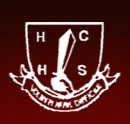| Harold Cressy High School | |
|---|---|
 | |
| Location | |
 | |
103 Roeland Street South Africa | |
| Coordinates | 33°55′53″S18°25′30″E / 33.931334°S 18.424865°E |
| Information | |
| Type | Public school |
| Established | 1951 |
| Status | Open |
| Number of students | 700 |
| Colours | Maroon White |
| Website | haroldcressyhigh |
Harold Cressy High School is a secondary school in District Six of Cape Town in South Africa. It was founded in January 1951 as the Cape Town Secondary School. The school has played a substantial role in South African history during the apartheid period and the building is identified as an important landmark.

